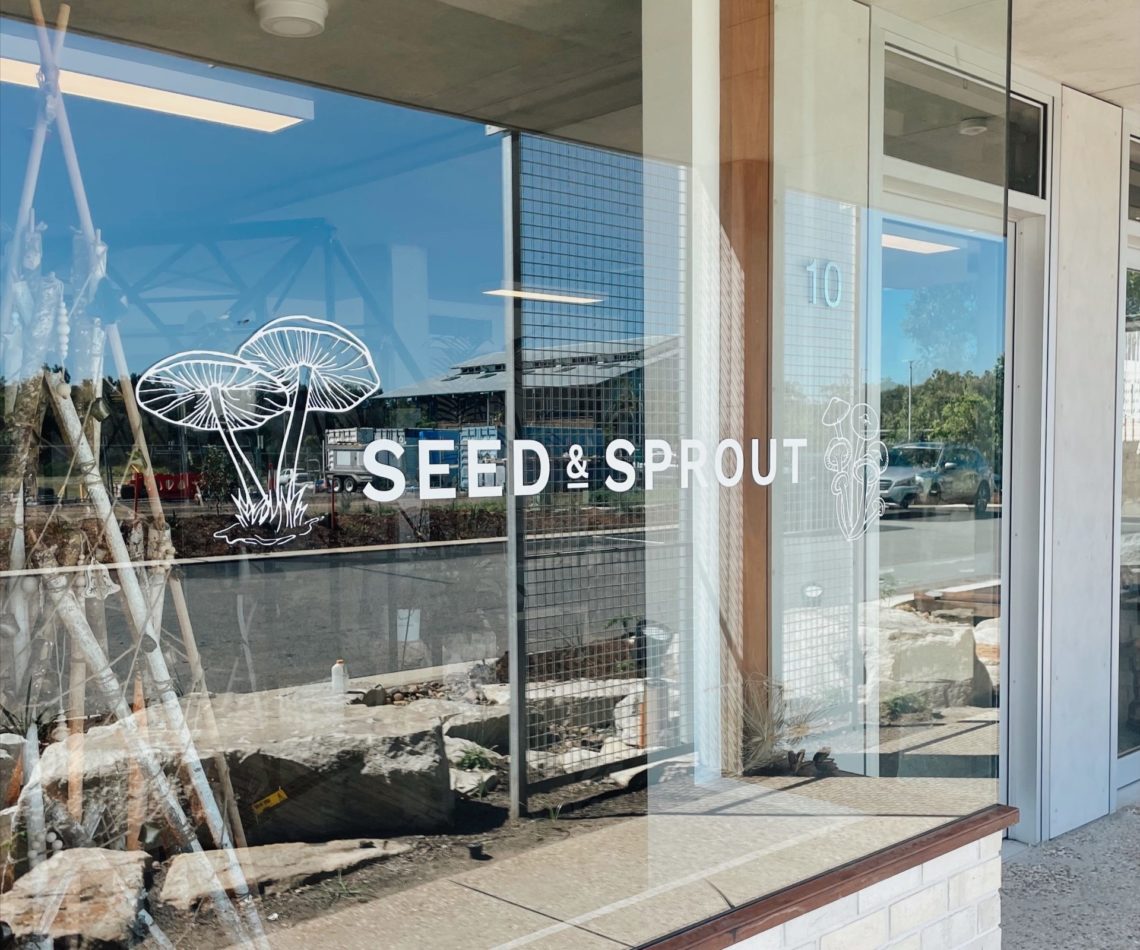I’m someone who loves eating mushrooms. But I would never have thought that you can use fungi as a design material!
The innovative folks at eco lifestyle brand Seed & Sprout collaborated with Swinburne University of Technology in a pop-up store in Byron Bay kitted-out with structures solely made from fungi.
The structures include product stands, seating, lighting, pots for plants, shelving, display installations and other design elements.
And it’s all made from mycelium – the non-fruiting body of a mushroom.
“We wanted to create something different,” Seed & Sprout chief executive officer Sally Tullett said.
“The concept of this pop-up supports our philosophy of reusing, recycling and repurposing where possible, and reinforces our desire to promote a culture of radical thinking, as ultimately, that is what will spark the change that is so needed in the world right now.
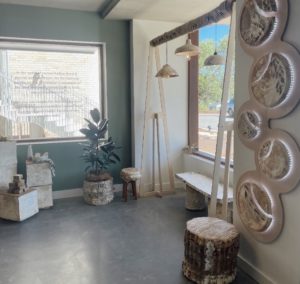
This pop-up shop features structures made from mycelium as a collaboration between eco lifestyle brand Seed & Sprout and Swinburne researchers.
What is mycelium?
“Mycelium itself is just the root of the mushroom. Just like the root of a plant, you need to grow it in a substrate like soil,” Canhui Chen, Swinburne’s Lecturer of Architectural Design who worked with Seed & Sprout on the project, told The Fifth Estate.
“We can use organic material, anything cellular-based that it will be able to digest. For example, wood chips, corn husk, coconut husk, even coffee grinds… the mycelium is like a net that binds material together.”
In this project the researchers used reishi mushrooms as the mycelium. It’s a type of mushroom well-known for its health benefits and used in tea and skincare. It’s also the fungi that scientists know can be used to produce the strongest and most durable mycelium structures.
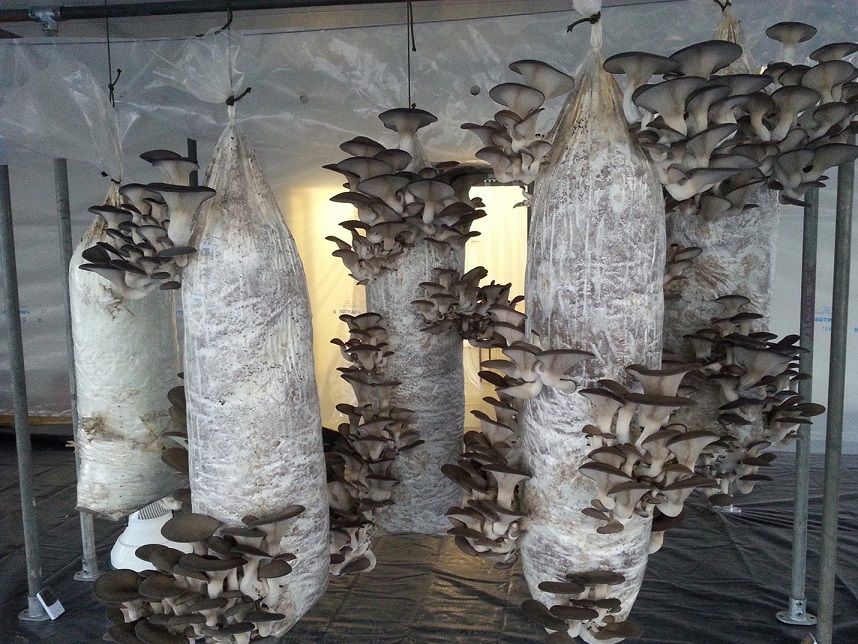
Mycelium is the root of the mushroom. It is indefinitely renewable and is difficult to kill. It can be grown from a single spore, or taken as a by-product of mushroom farming that would otherwise become agricultural waste.
Mycelium as a design material
The mycelium is grown in temperature-controlled and humidity-controlled conditions moulded into the desired shape.
“It grows very fast. In the right conditions it will finish growing in two weeks.”
Chen says that it is very easy to grow and almost impossible to kill except when dried over a long period of time. It is then baked to remove moisture contents and kill the mycelium to stop it growing.
“It’s a pretty versatile material,” he says.
“Basically, it’s a material we can grow into different shapes. We can mould it in any shape. We are exploring furniture, building materials, interior linings, and insulation.”
“Fungi-derived materials is a very broad area… you are talking about a plethora of different materials all with different manufacturing processes, current degrees of commercialization, [and] future potential,” engineer and post-doctoral researcher and mycelium expert Dr Mitchell Jones said in an emailed response.
He wrote that “mycelium-colonised agricultural residues are useful for any foam-grade material application” including; packaging, insulation, acoustic panelling, floor panels, and even paper, leather alternatives, wound dressings, and water filtration.
“There have been a few things in the past, such as the Hi-Fi organic compostable tower (New York Museum of Modern Art) and Mushroom Tiny House, both done by US based Ecovative Design”.
Read: Turning fungus and wood waste into compostable insulation
Read: Mushrooms and rice could play a role in zero-carbon buildings
Seed & Sprout say it is exploring prototypes for potentially making product packaging out of this material, and that as the material becomes more commercially available there might be more product options available to commercialise.
“This project has been really exciting and has opened our eyes to what’s possible. As the material is so new and emerging, it’s difficult to get high volumes of products made; however, we hope in the future that we can work this incredible material into our product range in a sustainable way,” the company said in an emailed statement.
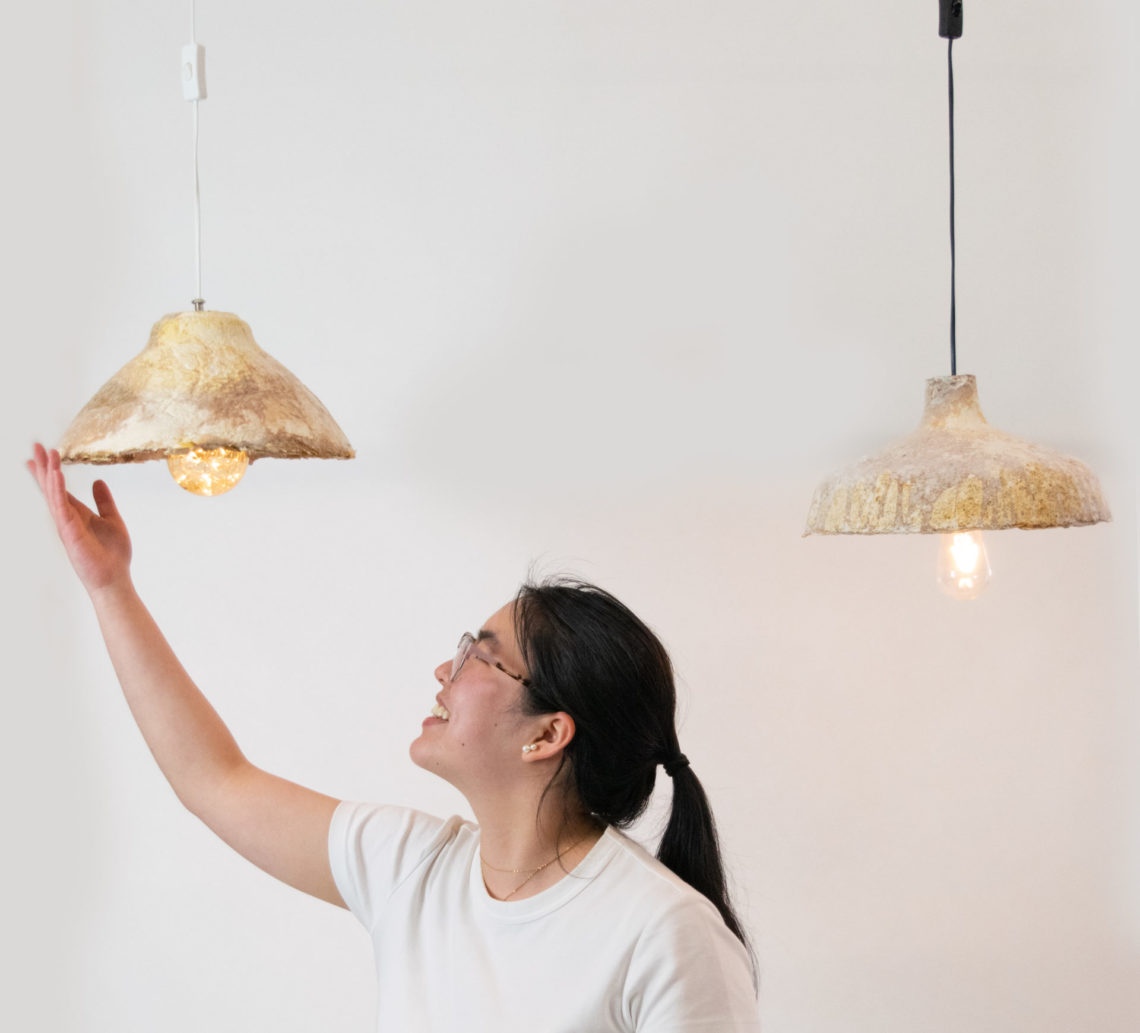
Mycelium can be used to create durable and biodegradable structures that can conform to almost any shape. Featured: Adele Easton with a mycelium-based lampshade.
Sustainability
As a material, mycelium is a renewable alternative to traditional design and construction materials, because it regenerates potentially forever.
Chen compares mycelium to wood in that it is strong, natural and renewable and if you put it in the ground it will decompose, just like wood.
Chen says that while the university has incubated its mycelium structures so far, his team is now working with mushroom grower John Ford of Unearthed Co Mushrooms in the Yarra Valley to find ways to epicycle the mycelium waste produced from mushroom farming.
A circular economy material
A huge benefit of mycelium production is its ability to be part of a circular economy, especially in relation to farmers.
“Mycelium is a form of waste that mushroom farms produce. I’m trying to work with the farmers so that they grow and take the fruiting bodies, and then we will reuse the mycelium waste and work with it.”
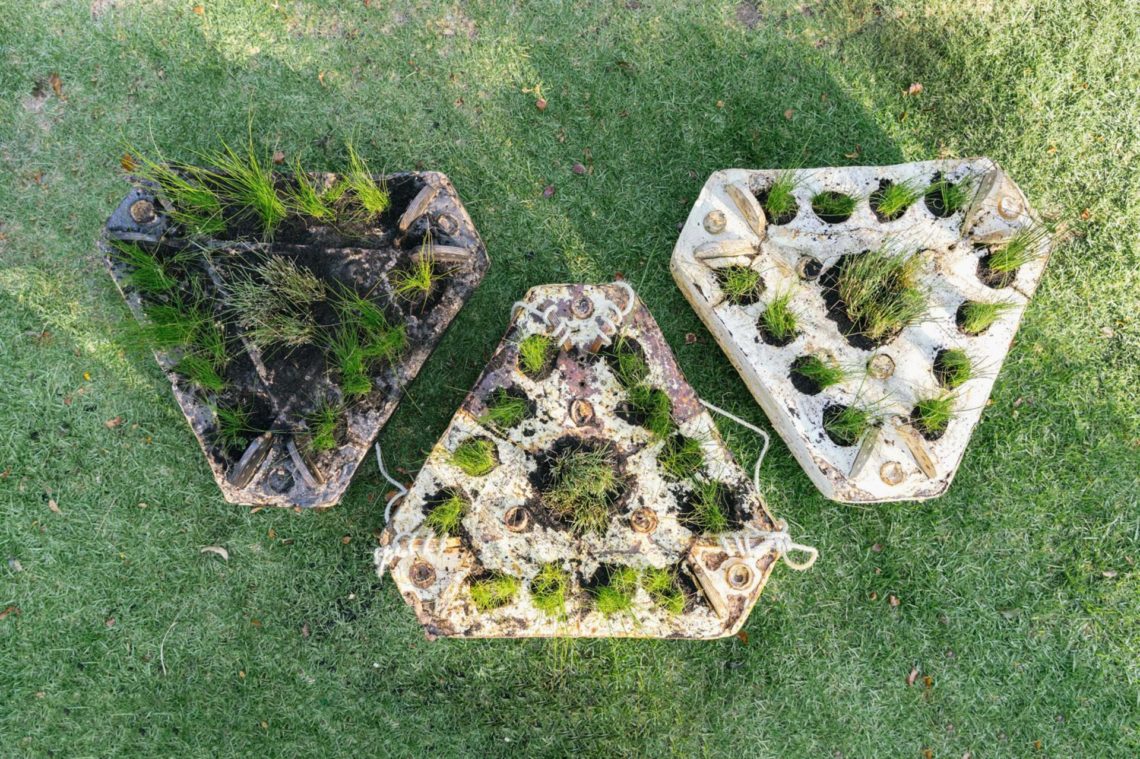
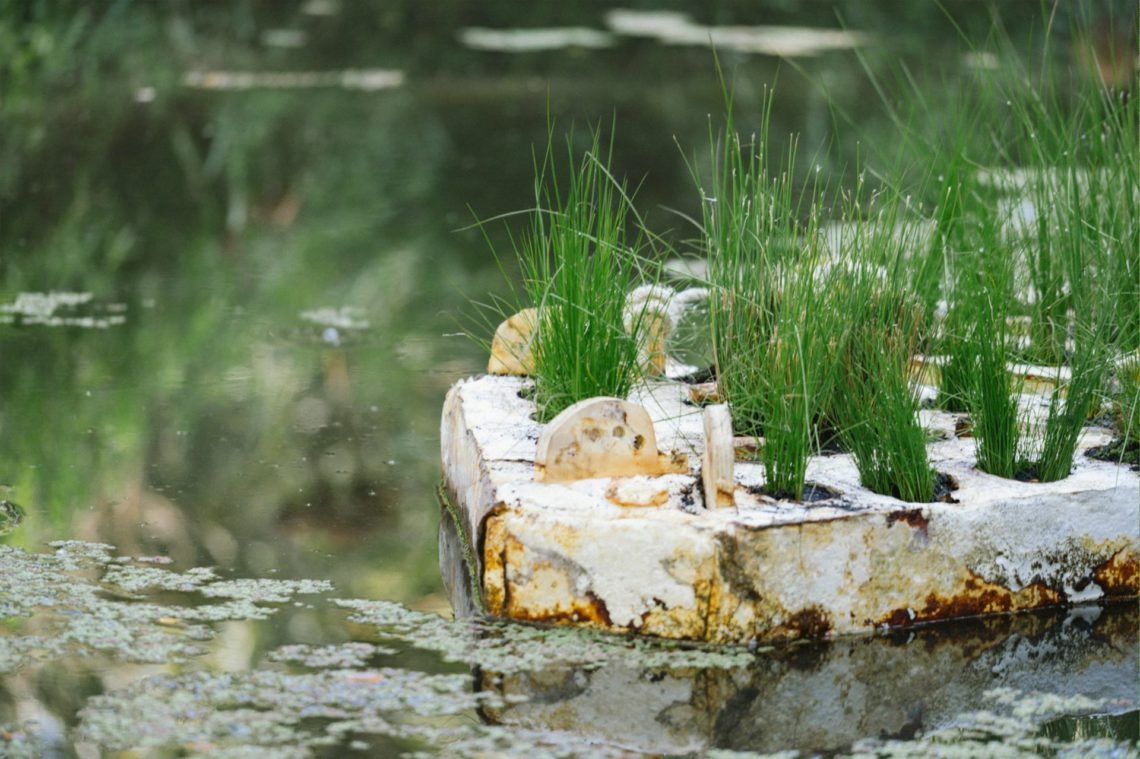
Canhui Chen of Swinbourne worked on the world’s first artificial wetlands using mycelium structures, a finalist in the Victorian Premier’s Design Awards 2021.
Is there a market for mycelium-based design materials?
Grimshaw principal architect Eduard Ross can see the potential.
He says there is hope that architecture will start to incorporate renewable materials like mycelium and algae once large-scale commercial production is viable.
“We are excited to look to these materials in the future,” Ross says.
Scaling up, though, could be an issue.
Chen says it’s a challenge to manufacturing these materials on a commercial scale, and mycelium may never fully replace other building materials.
“You need the facilities, the production speed. We haven’t grown in huge quantities, so it’s very unknown.”
Is it expensive? Chen says yes and no.
“On the one hand it’s cheap because it’s fungi. You can replicate it as long as you have time, patience and skill. From one spore you make as much as you want. You can use organic waste that’s rubbish, so it’s cheap. It’s only expensive through the labour involved.
“The mushroom we use [reiki mushrooms] is more expensive to grow in Australia than importing it from China, just because of the labour involved.”
That’s where the collaboration with mushroom farmers comes in. If mycelium structures are produced from the waste of mushroom farms, it creates a circular economy and has the potential to bring costs down.
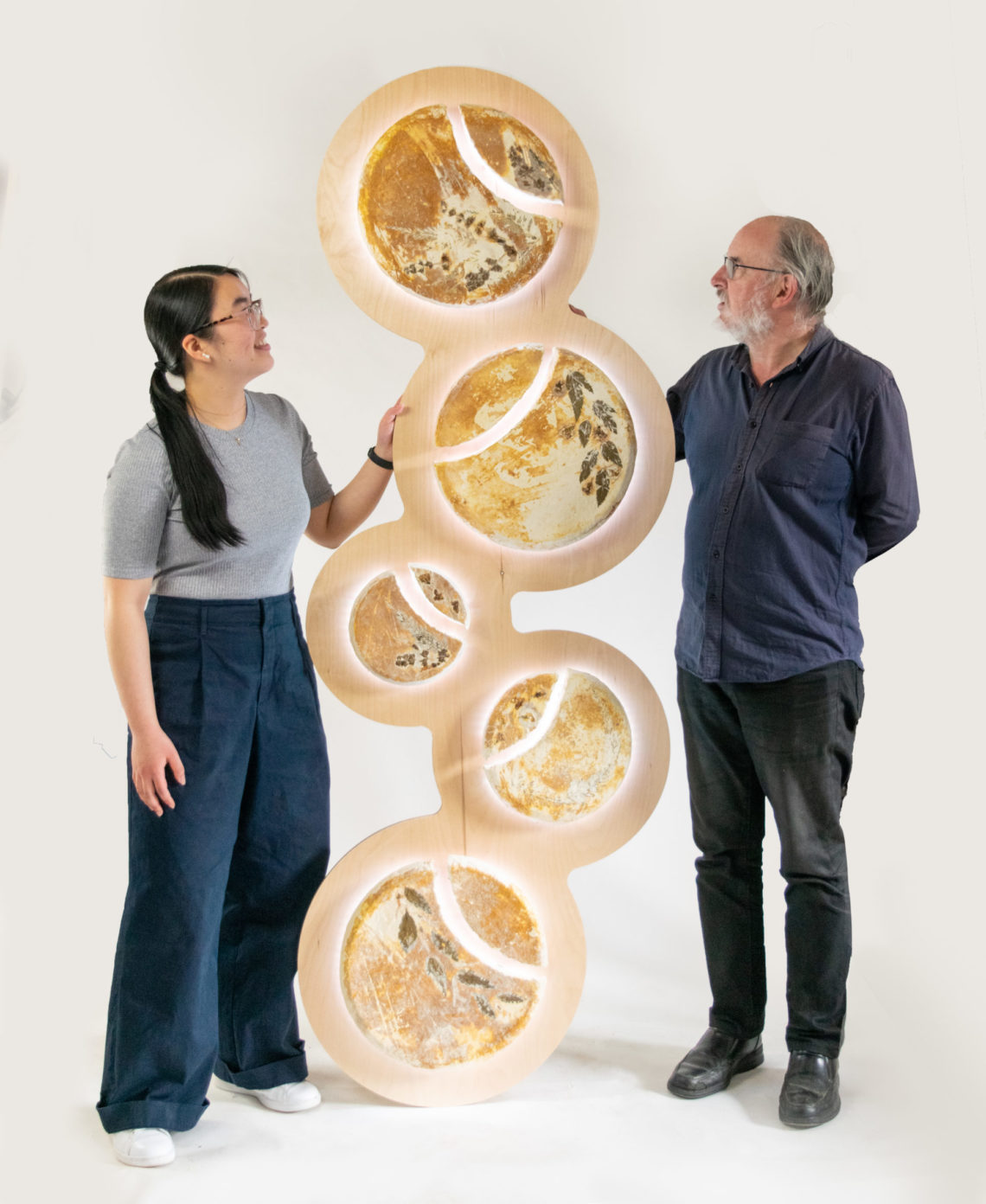
Designers are looking to the future of mycelium-based materials as part of a circular economy. Featured: Adele Easton and Leigh Conder with a mycelium-based structure.
“We have absolutely loved working with Swinburne,” Seed & Sprout’s spokesperson told The Green List.
“We have had so many curious people visit the store, some that had never heard of mycelium, some that knew much more than us! The mycelium fitout sparks conversation which is really what we wanted to achieve, as we believe that the real opportunity lies in sharing ideas and learning from each other, collectively exploring new and innovative materials to minimise waste – that’s what will incite real and meaningful change.”
You can drop into the pop-up shop until the end of February at Suite 11, Building B, 5 Easy Street, Habitat – Byron Bay, NSW.
